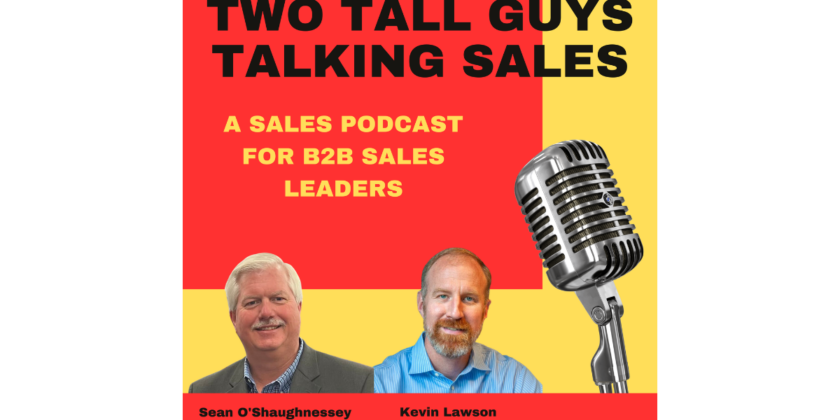In B2B sales, mastering the art of quota setting and management is a critical factor driving sales teams’ success across various industries. Whether you’re navigating the complexities of software sales, the intricacies of service offerings, or the demands of manufacturing and distribution, the ability to set realistic yet challenging quotas can significantly impact your team’s performance and, ultimately, your company’s bottom line. This article delves into the essential aspects of quota management, offering valuable insights for salespeople, sales managers aiming to enhance their management capabilities, and CEOs of small companies who find themselves at the helm of sales or managing a team of sales professionals.
At the heart of effective sales management lies the strategic planning process, ideally kicking off well before the new fiscal year begins. Best practices in sales management suggest that CEOs should aim to deliver sales plans and quotas for the coming year by December 1st. This timeline allows sales teams ample opportunity to digest the new targets, make necessary preparations, and hit the ground running as the new year commences. Establishing clear expectations early on fosters a sense of direction and motivation among sales representatives, setting the stage for a productive and goal-oriented year ahead.
However, the task of quota setting extends beyond merely assigning numbers. It requires a deep understanding of your company’s strategic goals, market potential, and the individual capabilities of your sales team. For larger organizations, the luxury of averaging performance across a team can help mitigate the impact of underperformers, while in smaller teams, the challenge intensifies as each member’s contribution weighs heavily on achieving collective goals. Regardless of team size, the key is to strive for a balance that pushes your team to reach new heights without veering into unrealistic expectations.
Quota management also entails navigating the intricacies of assigning quotas that align with company objectives and market realities. Sales leaders must analyze available markets within their representatives’ territories, considering factors such as established customer relationships, potential for new account acquisition, and overall market demand. This analytical approach allows for quotas that are grounded in data and tailored to each sales territory’s unique dynamics.
Moreover, the discussion around quota management underscores the importance of fostering a sales culture that prioritizes relationship building within smaller teams focusing on named accounts and in larger settings where strategic goals dictate sales targets. The emphasis on relationships highlights the notion that successful sales strategies are built on a foundation of trust, understanding, and genuine connections with clients.
Quota setting and management emerge as pivotal elements in the broader sales strategy, demanding careful consideration, strategic planning, and an acute awareness of both internal capabilities and external market conditions. By adopting a methodical approach to quota management, sales leaders can empower their teams to achieve and surpass their targets, driving growth and success in an ever-evolving business environment.
Immediate Action Item 1: Conduct a Comprehensive Sales Team Assessment
Before setting quotas for the upcoming fiscal year, it’s imperative for sales leaders, including CEOs, sales managers, and other decision-makers, to thoroughly assess their sales team’s past performance, capabilities, and areas of improvement. This action item involves gathering data on individual sales representatives’ performance, understanding the strengths and weaknesses of the team, and identifying any gaps in skills or resources that could impact their ability to meet proposed quotas.
Steps to Implement:
- Compile Performance Data: Collect and analyze sales performance data from the past year, focusing on metrics such as achieved versus set quotas, the average size of deals closed, the length of the sales cycle, and customer retention rates.
- Evaluate Team Capabilities: Assess the skills and expertise of your sales team and determine if any skill gaps need to be addressed through training or hiring.
- Set Preliminary Performance Benchmarks: Based on your assessment, set realistic performance benchmarks that consider both the achievements of top performers and the potential of those who are struggling.
This exercise not only aids in setting more accurate and attainable quotas but also provides insights into necessary training or resource allocation that could enhance the team’s overall performance.
Immediate Action Item 2: Align Quota Setting with Strategic Business Goals and Market Analysis
In tandem with assessing your sales team’s capabilities, aligning your quota-setting process with your company’s strategic business goals and a thorough market analysis is crucial. This ensures that the quotas reflect not just the capabilities of your sales team but also the realities of the market and your business’s aspirations.
Steps to Implement:
- Conduct Market Analysis: Analyze the market dynamics specific to your industry, including potential for growth, competition, and emerging opportunities. This analysis should also consider the territories assigned to each sales rep, focusing on factors like existing customer relationships and the potential for new account acquisitions.
- Review Strategic Business Goals: Revisit your company’s strategic objectives for the upcoming year. Quotas should not only be about meeting sales targets but also about contributing to the company’s broader goals, whether expanding into new markets, launching new products, or increasing market share.
- Integrate Market Insights with Business Goals: Use the insights from your market analysis and the understanding of your strategic goals to set challenging yet achievable quotas tailored to the unique dynamics of each sales territory and aligned with where the company aims to grow.
By closely aligning quota setting with a deep understanding of your sales team’s capabilities, market conditions, and strategic business objectives, you create a roadmap for success that is both ambitious and grounded in reality. This approach not only sets your team up for achieving their targets but also ensures that their efforts directly contribute to the company’s overall growth and success.
These immediate actions, rooted in thorough analysis and strategic alignment, provide a solid foundation for setting realistic, motivating quotas that propel sales teams toward achieving exceptional results, thereby enhancing the company’s revenue generation capability and securing its competitive edge in the marketplace.







